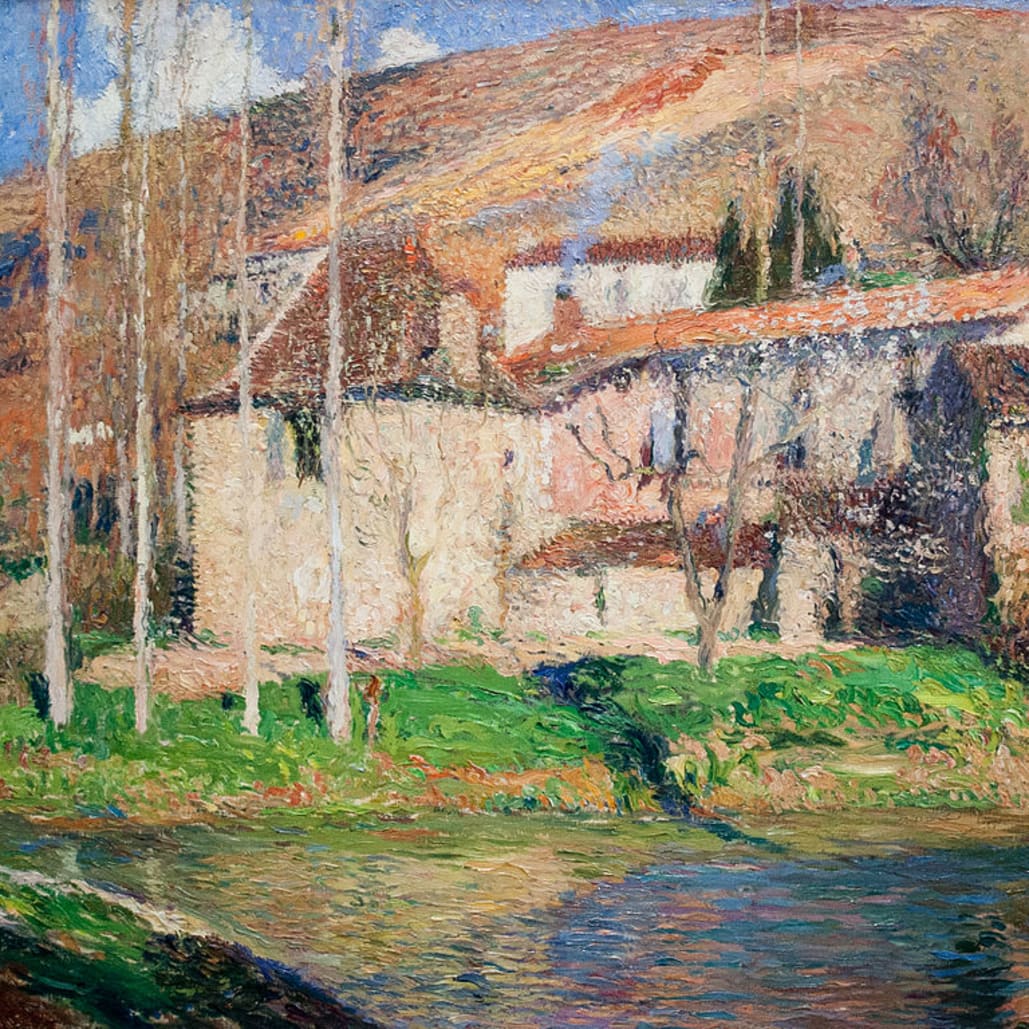
Henri Martin
Bio
Henri Jean Guillaume Martin was born on 5 August 1860 in Toulouse. Henri Martin studied at the Ecole des beaux-arts of Toulouse between 1877 and 1879, where he was trained by a certain Jules Garipuy. In 1879, with a municipal grant in his pocket, he went to live in Paris and became a pupil of the academic painter Jean-Paul Laurens.
In August 1881, he married Marie-Charlotte Barbaroux, a pastelist whom Henri Martin had met during his time at the Fine Arts School in the Pink City. They had four sons, two of whom became portrait and landscape painters: René Jean, who signed under the name Claude-René Martin, and Jacques Auguste, who used the artist's name Jacques Martin-Ferrières.
In 1855, Henri Martin travelled to Italy and studied the Italian primitives with Ernest Laurent and Edmond Aman-Jean. This discovery of the Italian boot marks a turning point in his career as an artist and in his art. The painter chose a more poetic inspiration and his technique gradually moved away from the academic models he had acquired during his apprenticeship at the Ecole des beaux-arts.
Henri Martin then turned to a spontaneous divisionism, influenced by neo-impressionism. His painting is composed of light, short, carefully separated strokes. These brushstrokes build up forms and light in a chromaticism that is oriented towards an idealised reality and invites us to travel and dream.
A great reader, Henri Martin particularly appreciated the writings of Edgar Allan Poe, Lord Byron, Dante, Charles Baudelaire and Paul Verlaine. Henri Martin also painted works that were close to symbolism: misty landscapes populated by timeless and melancholic characters.
Even though he tended to move away from symbolism, Henri Martin always retained his poetry and his mysterious side, as the secret and diffuse atmosphere of his landscapes testify. The painter from Toulouse set up a kind of spiritualisation of forms in an idealised whole. His painting is a gateway to a calmer aesthetic and expression with rather broad pointillist touches.
Henri Martin honoured important public commissions in France, for example he decorated the Capitole of Toulouse in 1906, a room bears his name in the current town hall of Toulouse. He decorated the prefecture of the Lot in Cahors, the Sorbonne in 1908, the Hôtel de Ville in Paris, a cabinet in the Palais de l'Élysée in 1908, the Conseil d'État between 1914 and 1922 and the town hall of the 5th arrondissement of Paris in 1935.
In 1896, he was awarded the croix de chevalier of the Legion of Honour and in 1914 he was made a Commander. On 24 November 1917, Henri Martin was elected as a full member of the Académie des beaux-arts.
Henri Martin ended his life in the Lot in France, more precisely in Labastide-du-Vert where he had set up his studio. He died on 12 November 1943 at the age of 83.
According to Artprice, Henri Martin was the 779th most valuable artist in the world in 2020. Between 2000 and 2020, the artist's value increased by 30%. Henri Martin's biggest collectors are in the United States, France and Great Britain. The oil on canvas La joie de vivre (1905) is currently the record for a work by Henri Martin at public auction. It was sold at auction in New York in 2012 for €1.3 million including costs.
Collectors of Henri Martin's art include the French magistrate Paul Riff, who died in 1929, and who was a passionate collector of the Toulouse native's paintings.
Works by Henri Martin are held in prestigious French museums: the Musée d'Orsay, the Musée de Cahors Henri-Martin, the Musée des Beaux-Arts in Bordeaux, the Musée des Augustines in Toulouse, the Musée des Beaux-Arts in Carcassonne, the Musée Fabre in Montpellier, the Musée des Beaux-Arts in Reims, and many others...




